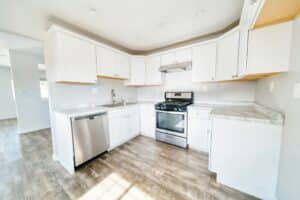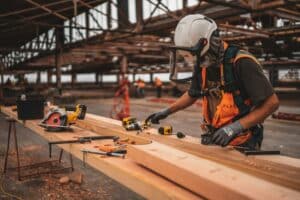Sustainable construction is quickly becoming a necessity rather than an option in Thailand. With the country’s commitment to environmental preservation and the increasing need to combat climate change, building sustainably is crucial for future projects. Sustainable construction not only benefits the environment but also enhances the quality of life for occupants and can lead to significant economic savings over the long term.
Sustainable construction involves using methods and materials that have a lower impact on the environment. This approach includes reducing waste, conserving natural resources, and enhancing energy efficiency. Unlike traditional construction, which often disregards long-term environmental impacts, sustainable practices aim to create structures that are both efficient and harmonious with their surroundings.
Embarking on a sustainable construction project may seem daunting, especially for beginners. However, understanding the core principles and practical benefits makes it easier to implement these practices. This guide will delve into the essentials of sustainable construction in Thailand, providing you with the information needed to start your eco-friendly building journey. Whether you are planning a small home or a large commercial structure, these insights will help you make informed decisions that benefit both the environment and your bottom line.
Understanding Sustainable Construction
Sustainable construction focuses on creating buildings that have a minimal impact on the environment. This involves using materials and methods that reduce waste, conserve resources, and promote energy efficiency. The importance of sustainable construction lies in its ability to protect the environment and improve quality of life by creating healthier living and working spaces. These buildings are designed to use less energy, produce less waste, and integrate renewable resources wherever possible.
The environmental benefits of sustainable construction are significant. Using eco-friendly materials reduces the depletion of natural resources, while energy-efficient designs lower greenhouse gas emissions. Economically, sustainable buildings can result in substantial savings over time through lower energy costs, reduced water usage, and decreased maintenance expenses. These benefits make sustainable construction a smart choice for both the environment and the wallet.
Sustainable construction differs from traditional methods mainly in its holistic approach to building. Traditional construction often focuses on short-term goals and immediate costs, frequently overlooking long-term environmental impacts. In contrast, sustainable construction considers the full lifecycle of the building, prioritising methods and materials that offer long-term environmental and economic benefits.
Key Principles of Sustainable Building
Energy efficiency is a cornerstone of sustainable building. This principle involves designing buildings that use less energy for heating, cooling, and lighting. Incorporating renewable energy sources, such as solar panels and wind turbines, can further reduce a building’s carbon footprint. Insulation, energy-efficient windows, and smart HVAC systems are essential components that help maintain a stable indoor climate with minimal energy use.
Water conservation techniques are also vital in sustainable construction. Implementing systems like rainwater harvesting and greywater recycling reduces the demand on local water supplies and lowers utility costs. Low-flow fixtures and drought-resistant landscaping are practical ways to conserve water, making them excellent choices for sustainable buildings.
Using sustainable and recyclable materials is another key principle. Materials such as bamboo, reclaimed wood, and recycled metal are not only eco-friendly but also durable and cost-effective. These materials reduce the need for virgin resources and minimize waste sent to landfills. Selecting locally sourced materials can also reduce the carbon footprint associated with transportation.
By adhering to these core principles, you can create buildings that are not only environmentally responsible but also efficient and cost-effective. These practices contribute to a more sustainable future, helping to preserve natural resources and reduce environmental impact.
Practical Tips for Implementing Sustainable Practices
Implementing sustainable practices might seem challenging, but starting with simple steps can make a big impact. Here are a few easy sustainable practices for beginners:
- Energy-Efficient Lighting: Use LED bulbs which consume less power and last longer.
- Smart Thermostats: Install programmable thermostats to optimize energy use.
- Natural Ventilation: Incorporate windows and vents to maximize airflow and reduce reliance on air conditioning.
- Water-Saving Fixtures: Use low-flow taps and showerheads to conserve water.
Reducing waste and recycling on-site are crucial for sustainability. Strategies include:
- Segregating Waste: Separate materials like wood, metal, and plastic for recycling.
- Reusing Materials: Salvage usable materials from old structures for new construction projects.
- Proper Disposal: Ensure hazardous materials are disposed of safely to prevent environmental contamination.
Maintaining air quality and natural light is essential for healthy living environments. You can achieve this by:
- Installing Air Filters: Use high-efficiency filters to reduce pollutants.
- Maximising Daylight: Design buildings with large windows and skylights to enhance natural lighting.
- Indoor Plants: Incorporate plants to improve air quality by absorbing pollutants and producing oxygen.
Navigating Local Regulations and Incentives
Understanding and adhering to local regulations is key to successful sustainable construction in Thailand. Thailand’s building codes and sustainability standards guide the construction process to ensure buildings are safe, efficient, and environmentally friendly.
Several incentives and grants are available to promote sustainable construction. The Thai government often offers financial incentives for projects that incorporate renewable energy sources or meet certain energy efficiency standards. Look for grants related to solar energy installation, rainwater harvesting systems, and green building certifications.
To navigate these regulations and take advantage of incentives, follow these tips:
- Stay Informed: Regularly check for updates on building codes and sustainability standards.
- Consult Professionals: Seek advice from experts who are familiar with local regulations.
- Early Planning: Start planning early to ensure all permits and incentives are accounted for.
- Engage Authorities: Work closely with local authorities to streamline the permit process and ensure compliance.
By adhering to these guidelines, you can ensure a smoother construction process that meets local standards and takes full advantage of available incentives.
Conclusion
Sustainable construction is the future of building in Thailand. By understanding and implementing key principles such as energy efficiency, water conservation, and the use of recyclable materials, you can create structures that are eco-friendly and economically advantageous. Beginning with simple sustainable practices and gradually incorporating complex techniques can make the transition smoother and more manageable.
Navigating local regulations and leveraging available incentives can significantly support your sustainable construction efforts. Staying informed and working closely with professionals and authorities ensures compliance and maximizes benefits. Sustainable construction not only contributes to a healthier environment but also results in long-term financial savings and improved living conditions. For expert guidance and quality sustainable construction services in Koh Samui, contact CJ Samui Builders. Our team is ready to help you build a greener, more sustainable future.




